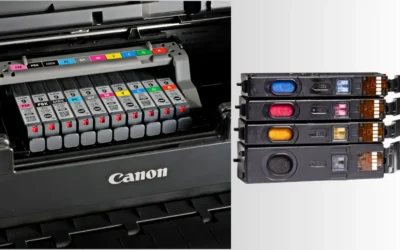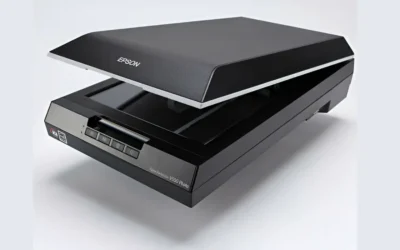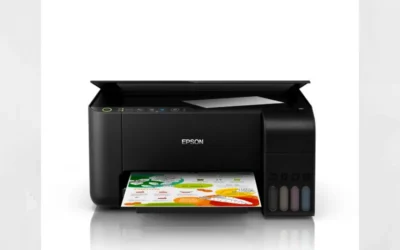Written By Tenaui Middle East
2024-05-16
Lamination machines are essential tools for safeguarding and enhancing documents across various industries. Suppose you are a business person, a photographer, or a copy shop specialist, understanding the distinctions between hot and cold lamination machines.
In that case, the contact can assist you in getting started on producing laminated items. This article examines the difference between hot and cold lamination machines and can enable you to make the right selection based on your specific needs.
Understanding Lamination
Lamination is one of the most commonly used processes in various materials industries. It protects a document or any other flat item by enclosing it with a plastic film as a protective measure from moisture, dirt, and other forces of reality. This specific type is used to improve the general appearance and increase the longevity of a material, thus being actively practiced in all kinds of professional and creative industries.
1. Hot Lamination Machines
Hot lamination machines use the heat that activates the adhesive on the lamination film. They are best for use with materials that are not sensitive to heat. The following are some facts about hot lamination machines:
- Heat Application: The machines’ average temperature ranges from 200 to 300 degrees Fahrenheit, making them more supportive in binding; the bond is strong and unlikely to peel or bubble.
- Materials: These machines are perfect for office documents, photographs, and prints that are less vulnerable to heat damage.
- Finish: In hot lamination, the finish tends to be glossier. Thus, the colors are vibrant, and the contrast is woven unconsciously.
2. Cold Lamination Machines
On the other hand, cold lamination machines use pressure to laminate the film around the document. Cold lamination is used for materials that heat can affect, such as inks and sensitive papers. The following are the benefits of using a cold lamination machine.
- No Heat: A cold laminating machine uses pressure-sensitive adhesives, eliminating the need for a heat source. Cold lamination machines are the best choice for vinyl and thin films. They are typically more user-friendly and need lower maintenance since they do not melt adhesive.
- Versatility: Cold laminating machines work well with heat-sensitive materials and are easier to use than hot laminators. They are suitable for delicate prints and preservation documents, requiring little setup and producing consistent results without heat damage, making them both user-friendly and efficient.
- Exceptional features: The lamination machine has varying speed control, silicone rollers, forward and reverse capabilities and a finger safety shield. It accommodates film thicknesses ranging from 25 to 250 microns. The Tenaui Middle East provides this type of lamination machine.
Choosing Between Hot and Cold Lamination
Lamination machine selection shall be based on the required features for your project. The following are some of the factors to consider in your selection to get more advantages in some applications;
1. Document Type:
Cold lamination machines are especially well suited for heat-sensitive materials that may fade or melt when exposed to high temperatures. As a result, they are the ideal choice for delicate papers and specialty inks that must be pressed together. They are ideal for fine art prints and custom digital works, which must be held together firmly but carefully.
2. Usage Frequency:
Hot lamination machines are likely to be very popular in intensive use scenarios such as commercial print shops because of their speed and the strength of the adhesion. Still, cold laminators offer multiple advantages in lower-volume operation environments or wherever the possibility of thermal damage is not desirable.
Those include schools and school districts, small offices of any type, or photography studios, where the range of lamination subjects can be very broad and always include materials that should be kept from being heated past critical temperatures.
3. Budget and Space:
Hot laminators are usually more extensive and costlier since they are built sturdily to hold up to the heat, and the cutting-edge technology to generate enough heat can be pretty expensive, as seen here. This machine is a massive financial commitment with monetary regard and the area it occupies.
On the other hand, cold laminators are just as durable and versatile and typically more compact and cost-effective. These are outstanding solutions for smaller companies or, as the name implies, in cold environments.
Discover the Excellence of TENAUI’s Cold Lamination Machine
Professionals looking for accuracy and trustworthiness in lamination need to rely on the cold lamination machine at TENAUI. Suitable for any business, regardless of the scale, including a photography studio, advertising shop, and others, this item’s specifications and capabilities are remarkable. Check out the most notable features of the device and find out how they can be converted into a return for the task:
- Variable Speed Control and Digital Settings: The machine uses digital micom controls with 9-speed settings that help fine-tune the lamination process based on the project’s requirements. The scope of speed control allows for optimal results without compromising the quality of sensitive materials.
- Robust Construction and Design: This equipment has silicone rollers and an all-steel frame for durability. It is also necessary to ensure that the equipment delivers bubble-free lamination. The machine’s steel frame enhances longevity, and silicone rollers provide adequate uniformly distributed pressure.
- User-friendly Operations: The machine has a forward and reverse function that enhances material handling and correction aspects while laminating. The machine also has a foot pedal for hands-free use, increasing operational efficiency and safety. The emergency stop option ensures the operator has quick access to control the activity in case of unforeseen circumstances.
- Flexibility in Handling and Application: This machine can be operated manually or by electric power, allowing use in various settings. It accommodates film thicknesses from 25 to 250 microns and widths up to 1600 mm, making it versatile for diverse uses, including laminating book covers, photographs, documents, and indoor promotional materials.
- Energy Efficiency and Safety: While the machine is robust in terms of performance, its power consumption is rated at 100W, which is an energy-efficient rating. Additionally, the absence of a heating mechanism drastically reduces the machine’s potential to damage the operator and documents through heat.
- Targeted Applications for Various Sectors: Ranging from the protective layer of a book cover in a library to the enhancement work of a design studio to make the color pages look more vibrant and in an office where documents need to be safeguarded. In addition, the machine process works with indoor advertising products and is ideal for companies that feature plastic shops that need to produce quality and sustainable promotional materials.
Frequently Asked Questions
Is cold lamination waterproof?
Yes, cold lamination is waterproof and highly weather-resistant. The machine securely encapsulates documents, making them suitable for use both indoors and outdoors and ensuring durable defense against various environmental factors.
How can you tell the difference between a hot and cold laminating pouch?
Hot laminating pouches are sealed using a pouch laminator that heats the adhesive to seal a document. This method is commonly used to create polished and professional seals on various prints. With cold laminating pouches, no heat is needed. The bags are sealed by pressure and can be applied manually, providing the perfect option for seals without a machine.
Wrapping Up:
To summarize, selecting a lamination machine depends on your materials and usage volume and also the type of machine you want to employ. This guide divides lamination machines into hot and cold lamination to help you select appropriately. With Tenaui, you can guarantee that your documents are protected and presented in the best way possible.


